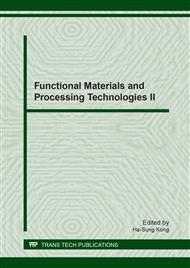p.75
p.82
p.91
p.97
p.103
p.118
p.124
p.130
p.136
Preparation of a Semiconductor Film with the Aid of a Superionic
Abstract:
The actuality of the topic chosen by us lies in the fact that the effect of oxygen on the properties of semiconductors has not been studied sufficiently well, mainly because of the imperfections of methods for controlling the oxygen content in semiconductor materials. Almost in all such materials, oxygen is present either as an uncontrolled impurity or as a doping additive, or, in the case of oxide semiconductors, as in our case with a semiconductor film of vanadium dioxide, is part of the compound. The oxygen contained in the semiconductor film significantly affects the property of the material: in the first two cases, this influence is determined by the amount and state of the impurity, in the third - by the composition, or by the stoichiometry of the oxide compound. We set a goal to develop a technique for obtaining a semiconductor film of vanadium dioxide in a controlled atmosphere of oxygen. The semiconductor film thus obtained is used in holography to record and store optical information. For the production of VO2 films by oxidation in a controlled atmosphere, an apparatus including an oxygen pump based on stabilized zirconia dioxide has been developed. The principle of operation and the main characteristics of such an oxygen pump is the unique application of the property of the superionics - to carry through itself exclusively oxygen ions under the influence of a constant current field and a high temperature. The technique developed by us for obtaining a semiconductor film of vanadium dioxide in a controlled atmosphere of oxygen has no analog.
Info:
Periodical:
Pages:
130-135
Citation:
Online since:
June 2018
Keywords:
Price:
Сopyright:
© 2018 Trans Tech Publications Ltd. All Rights Reserved
Share:
Citation:


